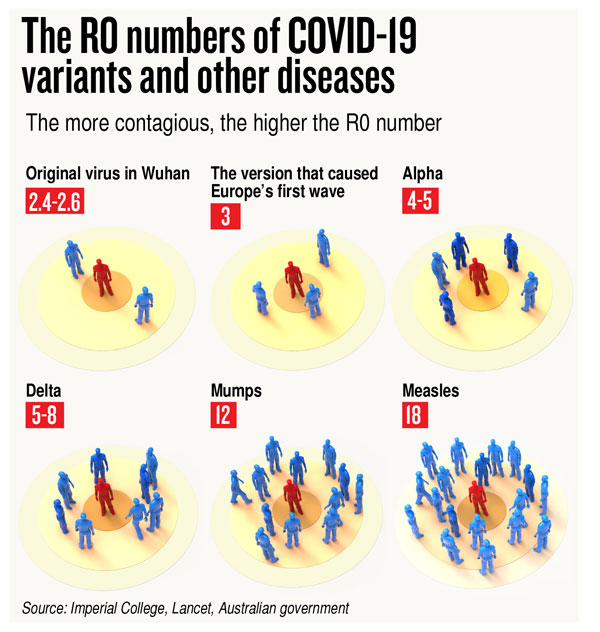News
Analysis of cases and deaths crucial to plot virus path
The decision to give COVID-19 deaths-by-date is a crucial need and should be done even with the past data as well (with retrospective effect) to get accurate evidence of the trajectory of the COVID-19 pandemic in the country, said many experts.
It is also important for RT-PCR case numbers to be reported on a daily basis, stratified into the categories of testing, it is learnt.
One expert argued that death numbers are critical for analysis because COVID-19 cases reported may be influenced by the limits of tests carried out. Both the daily death and case numbers analysed in tandem will provide the best indication of the trajectory of the pandemic by allowing the reproduction number (R) of the epidemic to be calculated properly.

Crucial ‘R’ number
The Sunday Times understands that this crucial ‘R number’ is the way an epidemic’s spread is assessed. ‘R’ denotes the number of people that 1 infected person will pass on the disease to (in this case COVID-19), on average.
Citing the example of another virus, an expert said that measles has an ‘R’ number of 15 in populations without immunity. Such a population would technically be where the people have no immunity to the disease either through having got the infection or been vaccinated.
If ‘R’ is 15, it means that 1 person spreads measles to 15 others. The coronavirus, SARS-CoV-2, which spreads COVID-19 has an ‘R’ value of around 3, if no action is taken to curb its spread.
This simply means that 1 person who is infected with COVID-19 can give it to 3 others, if active steps are not taken to control the virus.
Talking hypothetically, the expert said:
- If Sri Lanka’s COVID-19 ‘R’ number is 1 at any given time, it indicates that 1 infected person is spreading the virus to 1 other. This is a flattening of the line of cases.
- If the ‘R’ number is more than 1, then there is an increase of COVID-19.
- If the ‘R’ number is less than 1, then there is a decrease.
Experts pointed out that the ‘R’ number of the recent epidemic in Sri Lanka had been over 2 during late April. The interventions had progressively brought it towards 1 (case numbers plateauing) and now was slightly below 1. Thus, the case numbers are expected to reduce slowly. But the effect on reported cases may be confounded by the limits of RT-PCR tests being done. The death numbers also would show a decreasing trend but lagging behind the cases by 10-14 days.
Even though the daily number of positive cases gives evidence of the pathway being taken by the disease – whether expanding, contracting or plateauing – there is a major time-lag in collecting Sri Lanka’s numbers, some analysts lamented, pointing out that this was due to testing delays and also delays in issuing the results.
“Therefore, COVID-19 deaths would be a very good indicator which way the pandemic was heading, although being a lagging indicator,” they said.
They also reiterated that data from testing needs to be categorized to get the ‘R’ value. The numbers in the different groups being tested need to be clear. It should not be a “mish-mash” of data.
Several stressed that if and when travel restrictions are relaxed, Sri Lanka should strictly adhere to the control of large gatherings, reduce needless travel and adhere to the use of masks and maintaining distance between individuals.
“Otherwise, the outbreak will flare up again and we will be back at square one,” added one expert

